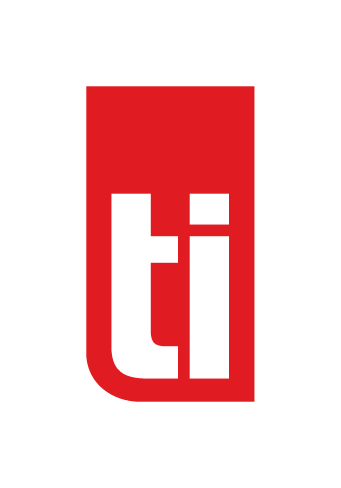As we reflect on the difficulties of 2021 and consider the trends which will shape the next 12 months, we remind ourselves that our retail sector is a global leader in innovation, and equal to any of the challenges our economy will throw at it.
Following two years of business disruptions, shifts in retail observed during 2021 reveal the shopper-centric nature of the retail industry.
SHOPPER BAHAVIOUR
Keeping a close eye on shopper behaviour has become critical, as shopper needs are driving most of the retailers’ initiatives.
 Planned shopping trips: Cash-strapped shoppers plan their shopping in advance, comparing products like-for-like and buying where they find them at the lowest price. This has inspired retailers to dial up the frequency of value promotions, allowing shoppers to cherry pick their favourite groceries on discount only across the leading retailers.
Planned shopping trips: Cash-strapped shoppers plan their shopping in advance, comparing products like-for-like and buying where they find them at the lowest price. This has inspired retailers to dial up the frequency of value promotions, allowing shoppers to cherry pick their favourite groceries on discount only across the leading retailers.
Larger basket size: The average basket size has increased, mostly due to shoppers pantry-loading on multi-buy promotions, but also as a result of the ‘one-basket shopping’ triggered by the pandemic, where shoppers purchase products across all categories from one supermarket to reduce their number of shopping trips, e.g. personal care products shopped at the supermarket rather than only at the pharmacy.
Decline in loyalty: Shopper loyalty to brands and retailers has declined across all shopper segments as shoppers seek out best value for money. The decline in brand loyalty is evidenced through private brands that are thriving in modern trade and emerging in the independent trade, where secondary affordable brands already flourish.
Shoppers plan shopping trips according to best price deals, picking products off broadsheet promotions across various retailers.
PROMOTIONS
 Retailers are prioritising regular multi-buy promotions and deep discounts as a footfall driver to meet shoppers’ relentless demand for value, despite the impact of margin sacrifices. Supplier participation has become critical to secure volume sales, as leading national brands and private label products compete to land in shoppers’ baskets.
Retailers are prioritising regular multi-buy promotions and deep discounts as a footfall driver to meet shoppers’ relentless demand for value, despite the impact of margin sacrifices. Supplier participation has become critical to secure volume sales, as leading national brands and private label products compete to land in shoppers’ baskets.
Competition is fierce for broadsheet advertising slots over key trading periods (i.e. grant payment week, month-end weekend) to maintain relevance with shoppers.
Suppliers are even more cautious about promotional spend, except for the multi-nationals who can still invest heavily in POS material in store. South African suppliers could potentially invest in price point efficacy rather than in-store POS material. It has been seen that the return on investment on in-store material is minimal if there is no real ‘wow’ factor to engage and convince the consumer.
BRAND POSITIONING
 In commodities it has become very clear that the market leader can no longer demand a premium. COVID and the high unemployment rate have taken spendable income out of the mid- to lower-end of the market, upon which the commodity sector relies heavily for volume. A marketing campaign really must be ‘next level’ to distinguish the brand from a competitor if it wants to charge a premium.
In commodities it has become very clear that the market leader can no longer demand a premium. COVID and the high unemployment rate have taken spendable income out of the mid- to lower-end of the market, upon which the commodity sector relies heavily for volume. A marketing campaign really must be ‘next level’ to distinguish the brand from a competitor if it wants to charge a premium.
RANGING
Grocers are prioritising space for hardware tools and home entertainment products that offer much higher margin opportunity for retailers than foods. This could pose a risk to further grocery space reductions in store.
E-COMMERCE
 The growth in online shopping is significant, resulting in more and more in-store pickers and delivery bikes. Online order pickers are starting to cause congestion in e-commerce priority stores.
The growth in online shopping is significant, resulting in more and more in-store pickers and delivery bikes. Online order pickers are starting to cause congestion in e-commerce priority stores.
As higher income shoppers opt for online shopping, brick and mortar stores attract shoppers into stores with the promise of a ‘great shopping experience’ through in-store theatre (‘shoppertainment’). Heavy investment is being made into service departments, especially convenience foods and ‘store-within-a-store’ concepts for non-food departments.
Looking forward to 2022:
Retail in South Africa has always been a hot spot for purpose-driven innovation, with retailers tuned into changes in consumer needs and responding with innovative solutions. This propensity is now even more pronounced, accelerated by the pandemic which has markedly changed shoppers’ needs and expectations of their retailer. During what we all hope will be a year of returning to a pandemic-free way of living and doing business, we are excited to see how retail trends will unfold and evolve.
 The Trade Intelligence Retail Trends Report, Presentation and/or Webinar are your indispensable tools for developing business strategies that are aligned with global FMCG trends, the South African trading context and retailers’ response to changing shopper behaviour.
The Trade Intelligence Retail Trends Report, Presentation and/or Webinar are your indispensable tools for developing business strategies that are aligned with global FMCG trends, the South African trading context and retailers’ response to changing shopper behaviour.


